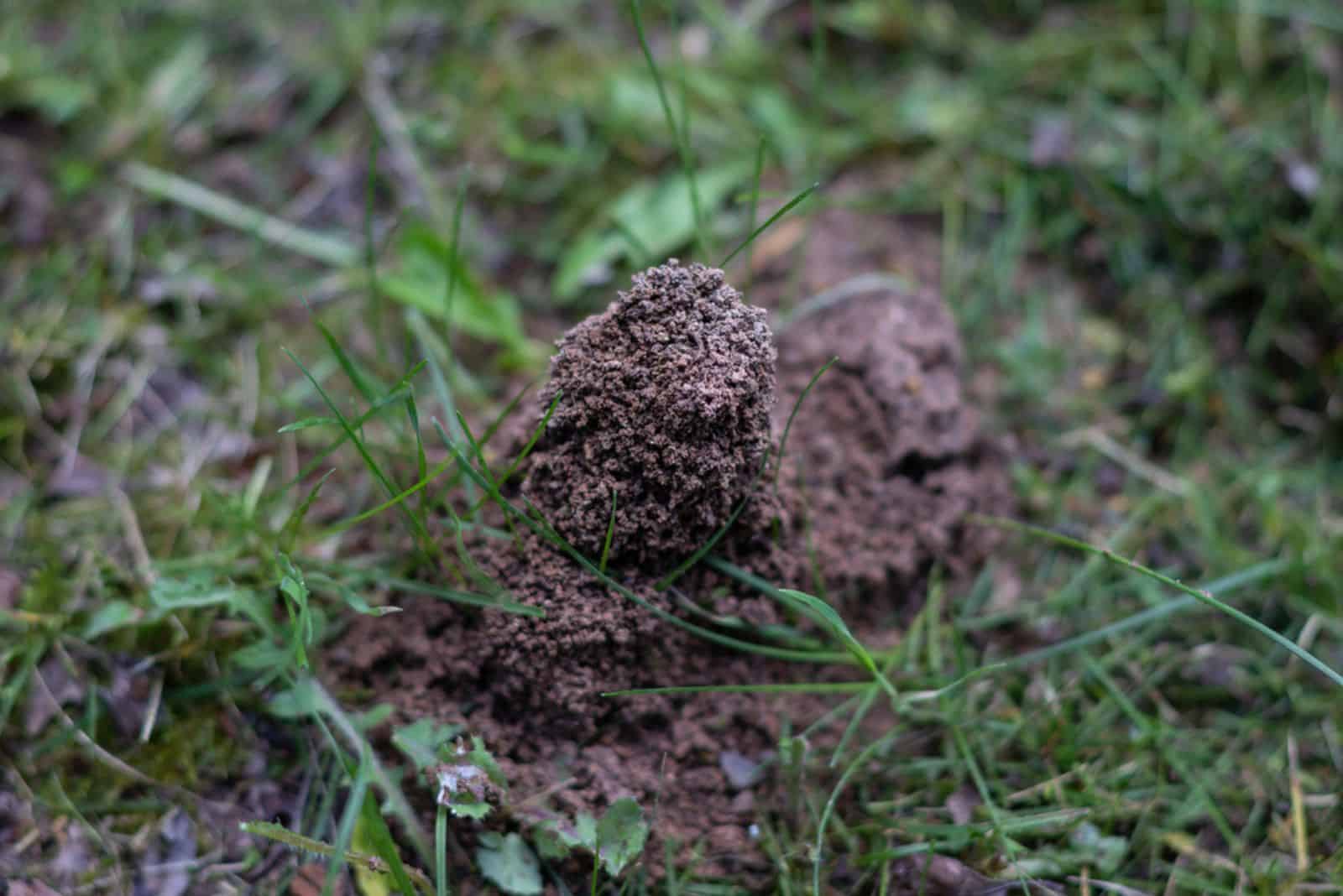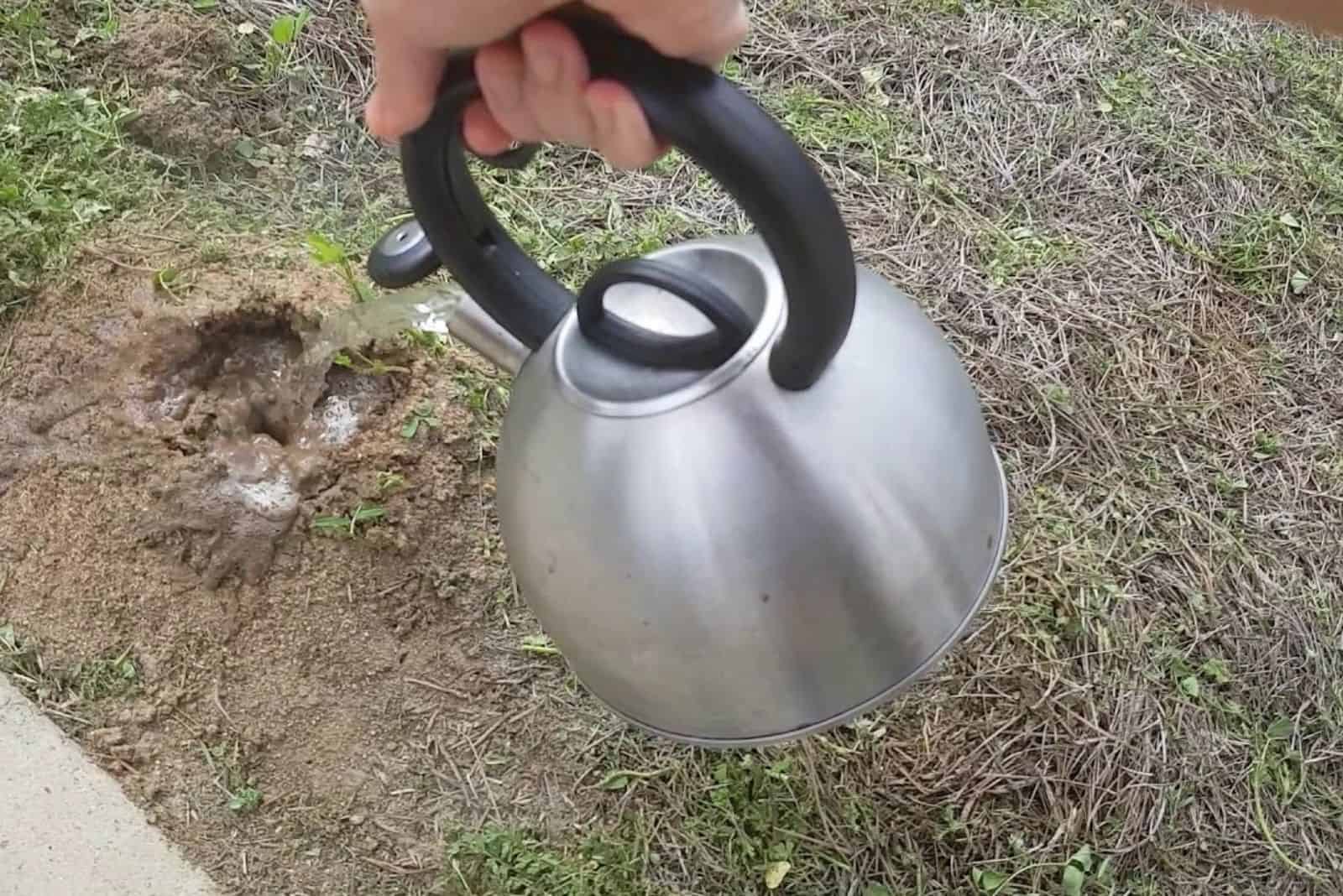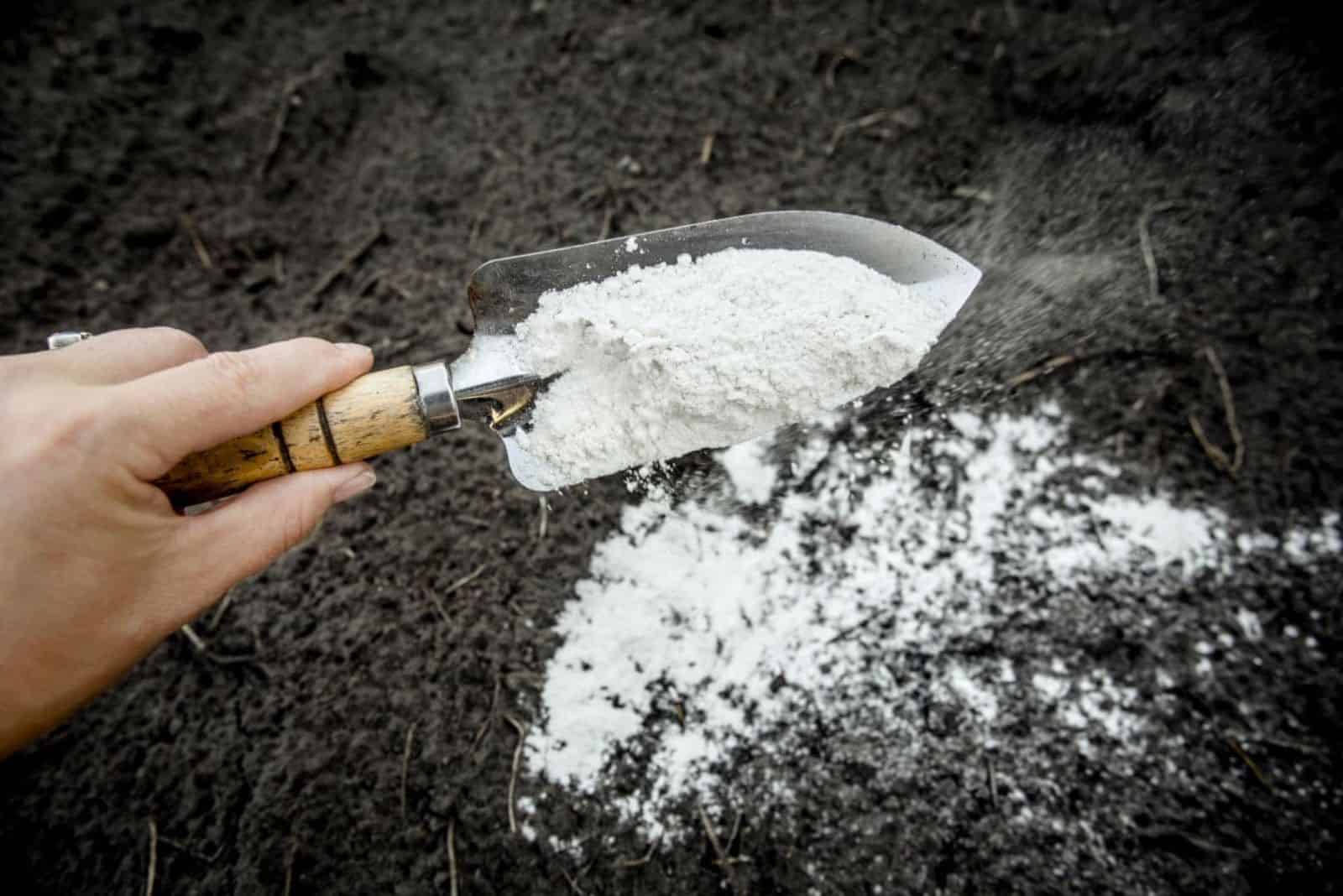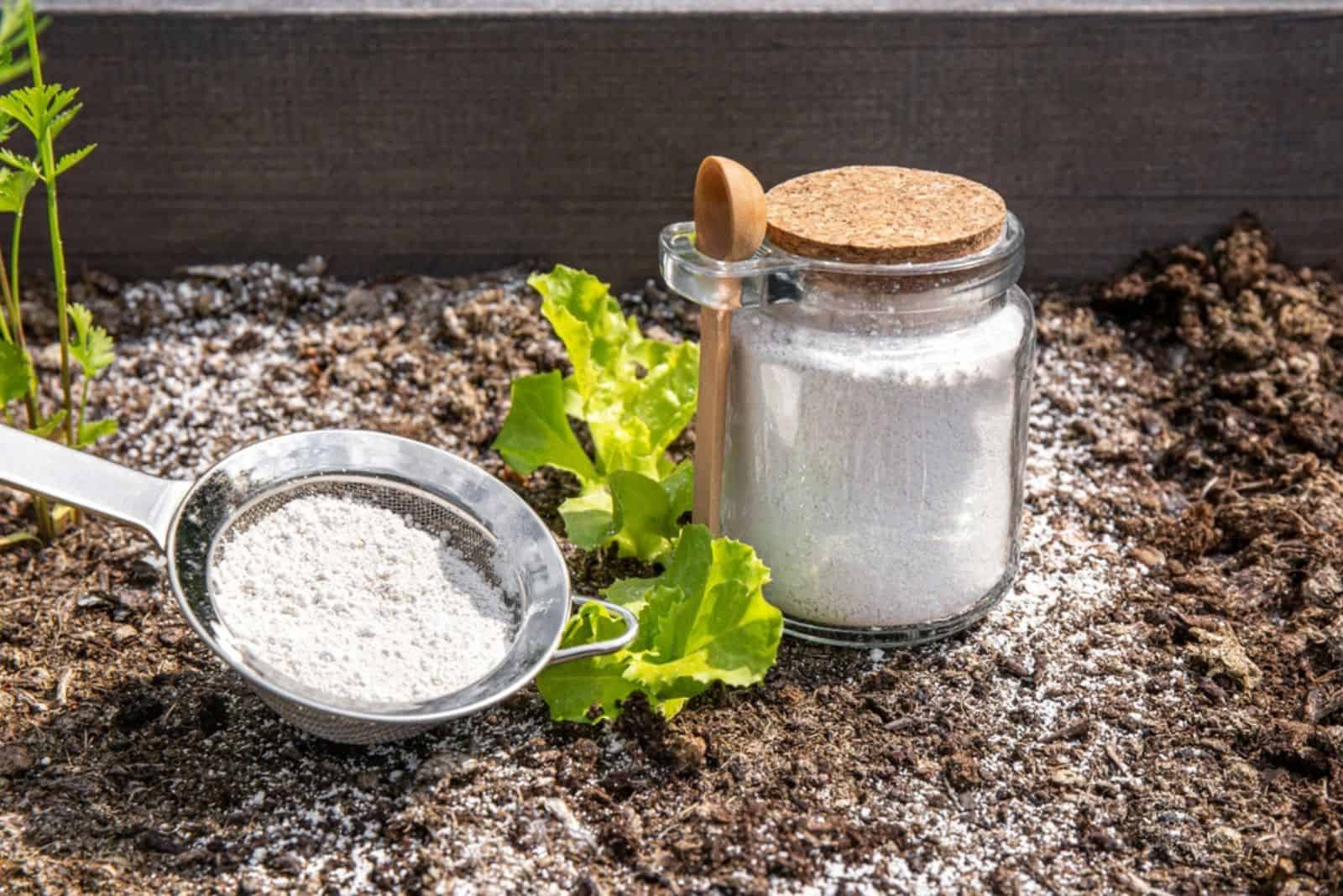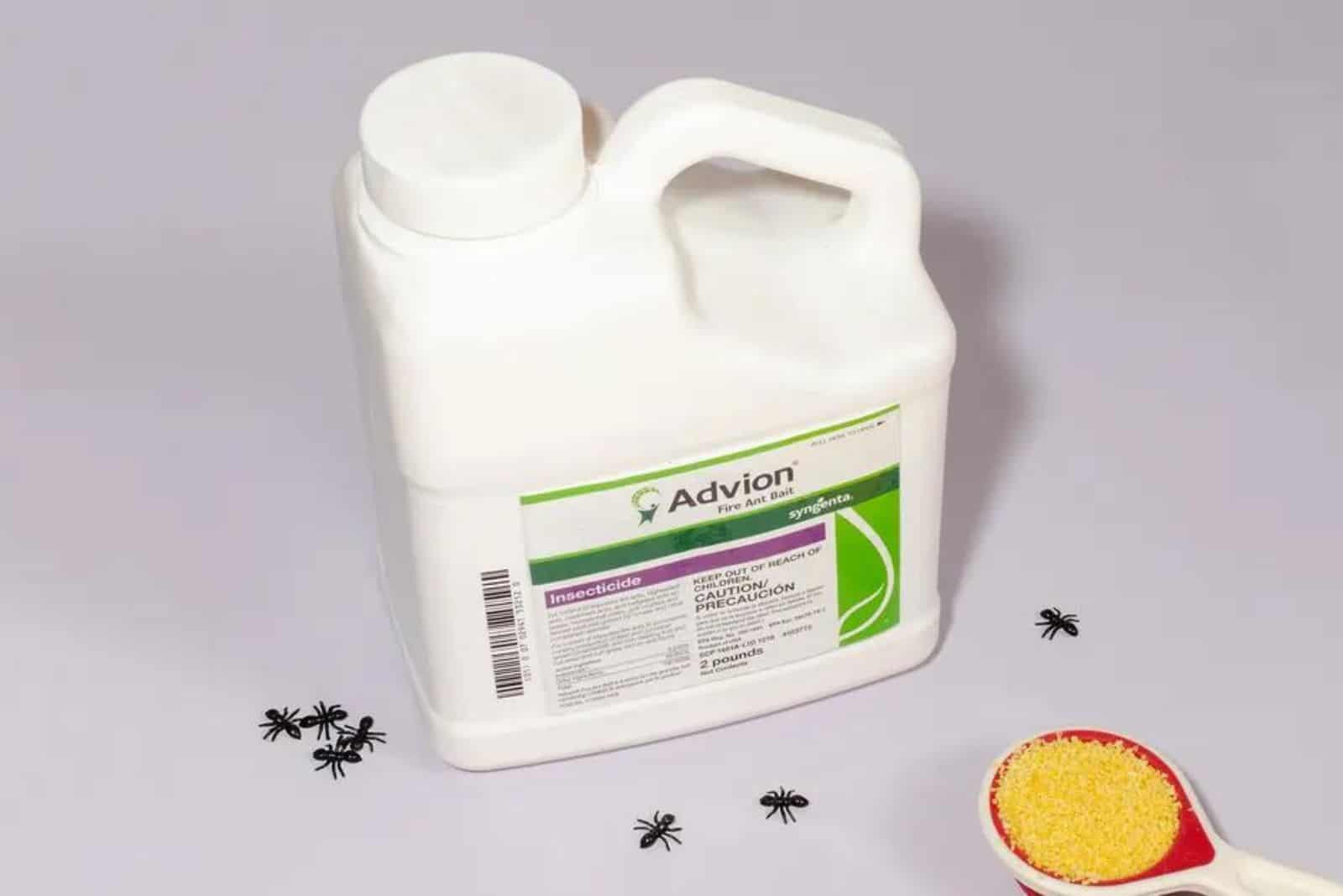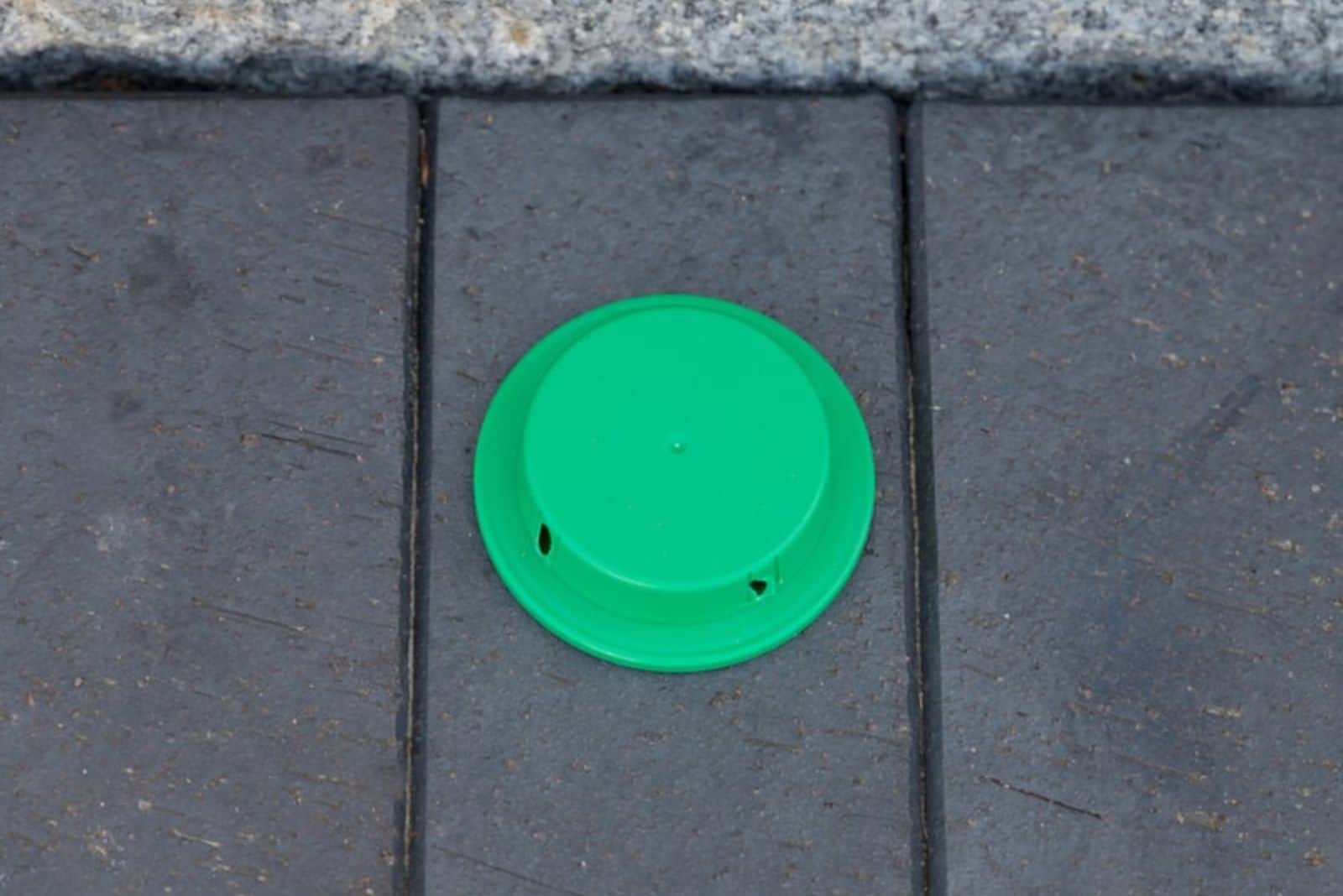Having ants in your backyard isn’t always a bad thing. They create tunnels which will aerate soil, scatter seeds, and help decompose organic matter.
However, if they burrow for too long, they can make the soil way too loose and cause your plants to lose anchor and not have enough medium to attach to.
And once ant hills start sprouting all over your yard, the landscape you worked so hard for will be totally ruined.
Here are some ways to eradicate them!
What You’ll Need
These are some of the supplies you may need to exterminate ants effectively:
• Boiling and room temperature water
• Baking soda
• Powdered sugar
• Diatomaceous earth (DE)
• Neem oil
• Granular insecticides
• Liquid pesticides
• Ant bait
• Means of application (sprayer, kettle or a large pot)
1. Boiling Water
Boiling water is one of the easiest ways to kill ants and get rid of their hills. Boil 2-3 gallons of water and pour it onto the ant hill.
You may have to do it several times, depending on the size of your kettle or pot.
The boiling water method works by killing the ants instantly, but since there are so many of them, it won’t destroy all of them. It has a 60% chance of exterminating ants; sometimes they’ll just relocate and start over. (1)
In that case, repeat the process and you’ll make it clear that your yard isn’t their playground.
Warning: Boiling water can seriously damage the lawn and plants surrounding ant hills, so you may need to do some overseeding afterwards. Make sure to avoid your green buddies and focus on soaking the hills.
2. Baking Soda Traps
Another eco-friendly option to kill ants is using baking soda traps. Mix equal parts baking soda and icing sugar, and place the bait near a mound.
These insects cannot distinguish between the two substances, and while sugar feeds them, baking soda reacts with acid in their stomachs and kills them within a few minutes.
But if the ants don’t ingest the baking soda, nothing will happen, so don’t forget to add the sugar to draw them in.
Baking soda, unlike boiling water, is mainly safe for the surrounding flora, so you won’t have to fix the damage afterwards.
Warning: Too much of this ingredient can increase the soil pH, so don’t go overboard.
3. Diatomaceous Earth
DE is one of the greatest natural insecticides, and for good reason.
This material has rough ends that cut into the ants’ exoskeleton, and the powder sticks to them. Insects will absorb this powder and quickly get dehydrated.
However, research suggests that it is more optimal to use DE in combination with other substances, such as essential oils and certain fungi. (2)
Warning: Make sure to wear a mask, goggles, and gloves when using diatomaceous earth as it can irritate your nose, nasal passages, areas around eyes, and skin.
4. Using Neem Oil
Neem oil kills ants and many other insects, so why not make it a constant material in your home?
This substance interferes with ant hormones, preventing them from growing, laying eggs, and feeding. Some research has even shown that neem oil reduces ant devastation by 75.5-83.5% when used for 9 days straight. (3)
All you’ve got to do is spray it directly on the ants and along their trails. If these insects also crawl all over your plants, make sure to apply the neem oil under the leaves as well.
Warning: Neem oil can burn plant foliage if you use too much of it or you use a highly concentrated solution.
5. Granular Insecticide
If ant colonies have gotten out of hand or you simply don’t have enough time to devote to constant applications, you can always use granular pesticides.
Look for ones containing permethrin and deltamethrin (they usually come in a powder form).
Sprinkle the granules on the hills and follow the advice on the package. It includes recommended dosages for various ant mound sizes, which makes the product more effective. Depending on the product, you might need 1-2 teaspoons or even half a cup.
The next step is to add about 2 gallons of water to allow the product to react. Again, follow the instructions for optimal results.
Warning: Make sure to never water to the point where moisture may run off to the soil because active ingredients may be damaging to the surrounding ecosystem.
6. Soaking The Hills With Liquid Pesticides
If you think that using granular insecticides requires too much work, you can always go with liquid ones.
They’re an equally powerful alternative that will quickly kill the ants and get rid of those unsightly mounds for good.
Liquid pesticides usually contain ingredients such as lambda cyhalothrin, bifenthrin, and cypermethrin, which are known as pyrethroids. (6)
You usually have to mix about 1.5 fl oz in a gallon of water and drench the ant hill. In a couple of hours, all of the ants within the mound should be dead.
Also apply the liquid 10-12 inches around the ant hill to prevent the queen from escaping via their underground tunnels.
Note: You might need to repeat the process within the next 1-2 months, depending on the recommended time frames of your product. This will make the method foolproof.
7. Setting Up Ant Bait
The last method I have in store is using ant bait. However, you’ll have to wait a bit for it to be effective because the worker ants first need to find the bait and then take it to their colonies where the product can get to work.
They look like food to the insects, but instead of sugar and fats, they contain spinosad, sodium tetraborate decahydrate, etc.
Put the bait down when the temperatures are between 70-95°F and there’s no rain that can relocate them.
These are also the conditions when worker ants are most active and there’s a higher chance they’ll find your bait and take it inside their hill.
Use about a half or three quarters of a cup per 5,000 sq ft, but always make sure to follow the manufacturer’s instructions. Place the bait near ant mounds and you’ll find little movement in the hill within a few days.
Be patient because this process can take up to several weeks, especially if you’re dealing with a larger infestation.
There’s no need to combine ant bait and insecticides; pesticides would kill off the ants before they had a chance to munch on the bait.
Warning: Keep these products away from your children and pets as it can cause nausea, vomiting, and skin irritations when ingested.
Wait For It To Work
Ants will eat grass seeds, burrow tunnels in the soil and mess with its texture, and build hideous mounds all over your yard.
I know you want to stop these things from happening immediately, but you need to give each of the above methods time to work.
It usually takes about 1-2 weeks to get rid of these insects, so don’t go looking for a new method before this time passes.
The best way you can tell whether it’s working or not (even before the 2 weeks are up) is by the ant activity. If you see that it has lessened or completely disappeared within those 2 weeks, the method worked.
But if you still see ants lurking around, go for another approach or repeat the same process, following the guidelines if using synthetic pesticides.
Get Rid Of Those Insects For Good
A couple of ants is quite beneficial for your garden’s ecosystem, but huge mounds constantly sprouting here and there is definitely not good.
Use one of the methods above, starting with a more natural approach and moving on to synthetic pesticides if you’re not satisfied with the results.
Sometimes the infestation is so large that only hardcore chemicals can do the trick!
Let us know if it worked!
Research:
1. Two-Step Method (n.d.). Texas A&M University, Texas Imported Fire Ant Research and Management Project.
2. Zeni, V., Baliota, G. V., Benelli, G., Canale, A., & Athanassiou, C. G. (2021). Diatomaceous Earth for Arthropod Pest Control: Back to the Future. Molecules.
3. Boff, P., Giesel, A., & Carissimi Boff, M. I. (2016). No-Residual Baits and Farmer Perception to Manage Leaf-Cutting Ants. Agroecology and Sustainable Food Systems.
4. Jiang, W., Soeprono, A., Rust, M. K., & Gan, J. (2013). Ant Control Efficacy of Pyrethroids and Fipronil on Outdoor Concrete Surfaces. Pest Management Science.
5. Karren, J. B. & Roe, A. H. (2000). Carpenter Ants and Control in Homes. Utah University Cooperative Extension.6. Pyrethroids 101 (n.d.). Pyrethroid Working Group.

